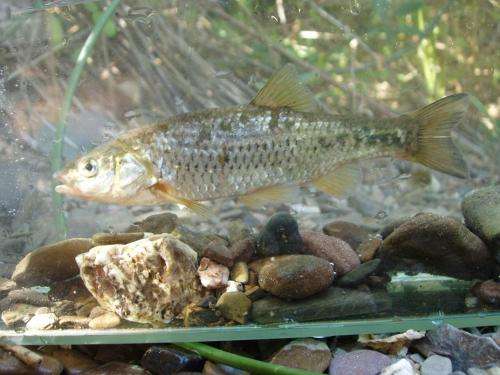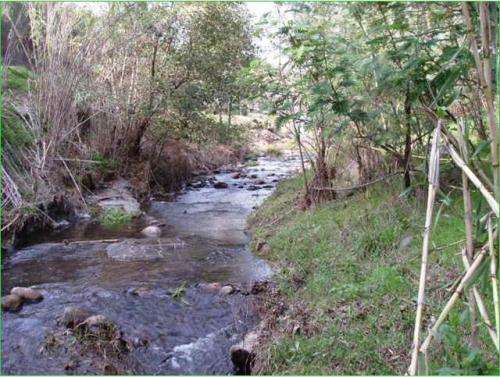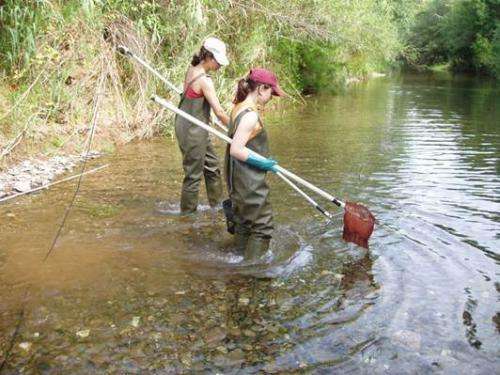This picture shows Squalius aradensis, one of the species featured in the study. Credit: Maria Joao Collares-Pereira
The two endangered fish species, Squalius aradensis and S. torgalensis, most generally belong to the Cyprinidae, or the carp family. This is the largest fish, and vertebrate family, formed of freshwater fish with a diversity of more than 2,400 species. The family also has an important economic value as a food source. More specifically, the two species studied are members of the subfamily Leuciscinae, formed of small freshwater fish commonly known as minnows. A new genetic study of the two endangered fish was recently published in the open access journal Comparative Cytogenetics.
This picture shows the natural habitat of the two highly endangered species S. aradensis and S. torgalensis, in Portugal. Credit: Maria Joao Collares-Pereira
S. aradensis and S. torgalensis are sister-species endemic to Portugal. These fish were listed as critically endangered in 2005 due to the rapid loss and destruction of their natural habitat, formed of local rivers and intermittent streams. Although the two species have adjacent distributions, they live in relative habitat isolation, which is believed to have enforced the differentiation process.
In their study of these endangered species, the team of scientists lead by Prof. Collares-Pereira, Universidade de Lisboa, have provided a comparative genetic analysis of DNA features in both species that confirm their common ancestry, but also the evolutionary divergence, believed to have been potentiated by the semi-arid conditions they are adapted to with drastic changes in hydrological regimes, namely drought events. Such events, by creating isolates and bottlenecks, might have strengthened the fixation of genome mutations.
This image shows the team of scientists collecting specimens for the study in Portuguese streams. Credit: Maria Joao Collares-Pereira
The authors address the current worrying status of the two fish species as highly endangered and draw attention towards the need of conservation of such two narrow-ranged and confined species. Specific measures regarding habitat protection and rehabilitation, which also include exotic species control, have to be actively implemented to preserve the genome integrity of the two highly vulnerable species.
Provided by Pensoft Publishers





















